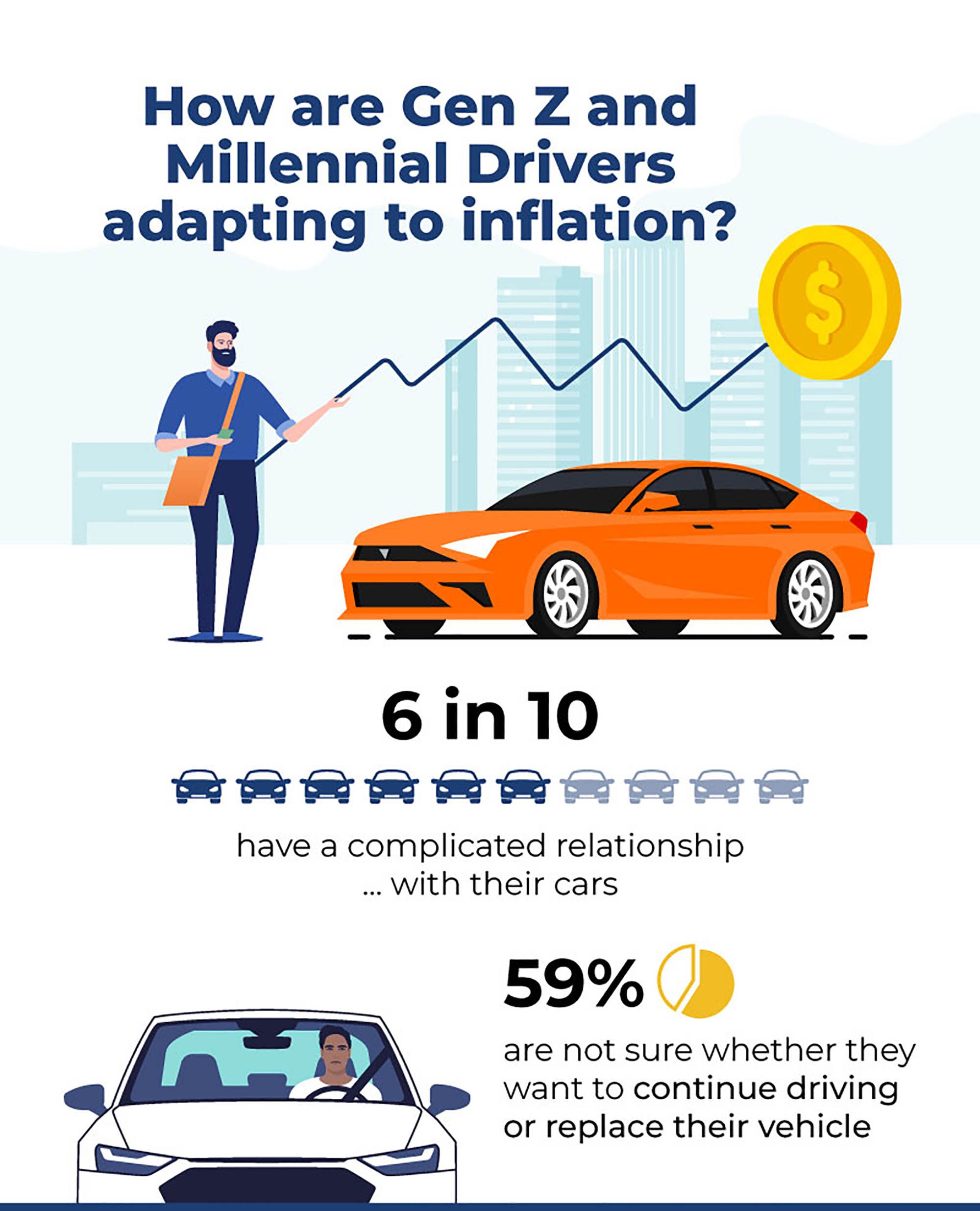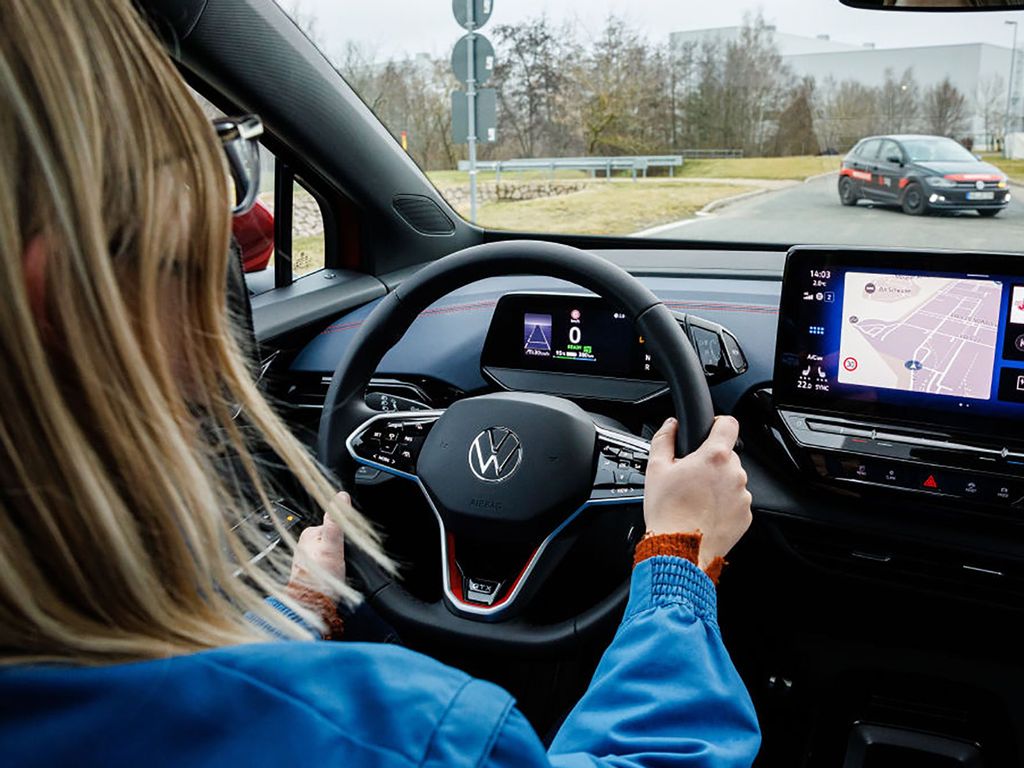Six in 10 Gen Zs and millennials have a complicated relationship – with their cars.
A recent survey of 1,000 Gen Z and 1,000 millennial car owners or lessees found that 59 percent are not sure whether they want to continue driving or replace their current vehicle.
People stop driving their car and get a new one when the upkeep surpasses their budget (39 percent), there are too many strange sounds or smells (38 percent), too many parts have to be replaced (37 percent) and too much of it is being held together by tape (37 percent).
Conducted by OnePoll on behalf of Kelley Blue Book Service Advisor, the survey also found it takes an average of eight warning lights for people to schedule vehicle maintenance.
Seventy-nine percent said they’ll do their own research about what their vehicle needs before seeing the mechanic, and 66 percent will look things up after their visit and return with a better sense of what their vehicle needs.
But although drivers seem proactive when it comes to their vehicle’s upkeep, they may not always be forward-looking when buying one. Six in 10 regret buying a car before inflation began in 2021. The loss of purchasing power, along with rising gas prices, have caused 42 percent to seek a better-paying job or side gig to help pay for vehicle upkeep, and 40 percent to turn to DIY for some of their vehicle maintenance.
“In this unpredictable economic landscape, it’s important to maximize your vehicle’s value. Not only will you extend its life and save money by not delaying upkeep, but you’ll also be more likely to sell it for a better price,” said a spokesperson for Kelley Blue Book Service Advisor.

“Additionally, researching what kinds of repairs your next car may need before buying it can help save time and money in the future.”
To this point, women were more likely than men to do research ahead of their maintenance visit (88 percent vs. 72 percent) as well as after (73 percent vs. 59 percent). That may be why women were more likely to feel they have accurate information about the fair market price for repairs and maintenance (76 percent vs. 64 percent).
Overall, though, six in 10 (62 percent) feel they owned their first vehicle for too long. Fifty-seven percent said maintaining it seemed cheaper than getting a new one, and 43 percent couldn’t find a newer version of the same model.
Some saw their first car as a learning opportunity, noting they now know better to get a vehicle that does not use too much gas (32 percent), properly test drive one before buying (31%), do more research ahead of acquiring or maintaining it (31 percent) and not getting one solely based on aesthetics or popularity (31 percent).
However, 27 percent tend to disregard and continue driving with broken speakers or radio, with 26 percent ignoring dull wipers, excessive emissions, low tire pressure light, oil change or scratches on their vehicle’s body or windshield.
Nearly two-thirds (64 percent) said they’re OK with their car not being up to par as long as it passes a state-licensed safety test.
On average, it takes five breakdowns for Gen Zs and millennials to buy a new car.
Sixty-nine percent are currently considering getting a new vehicle, but 23 percent of those respondents are not looking forward to it.
Half (50 percent) said they’re used to driving or maintaining their current car, 48 percent dread the amount of paperwork involved and 46 percent can’t find one they like for their budget.

“Having a one-stop resource to make sure you’re getting a fair price for vehicle maintenance and being able to anticipate repairs based on what vehicles like yours have gotten done, along with a supportive online community, can help you make better choices for your current and future vehicles,” the spokesperson added.
This is when people stop driving a car and get a new one:
When the upkeep is more expensive than their budget allows – 39 percent
When there are too many strange sounds or odors – 38 percent
When too many parts have to be replaced – 37 percent
When too much of it is being held together by tape – 37 percent
When it no longer matches their lifestyle – 31 percent
When there’s smoke coming out of it – 29 percent
Produced in association with SWNS.







